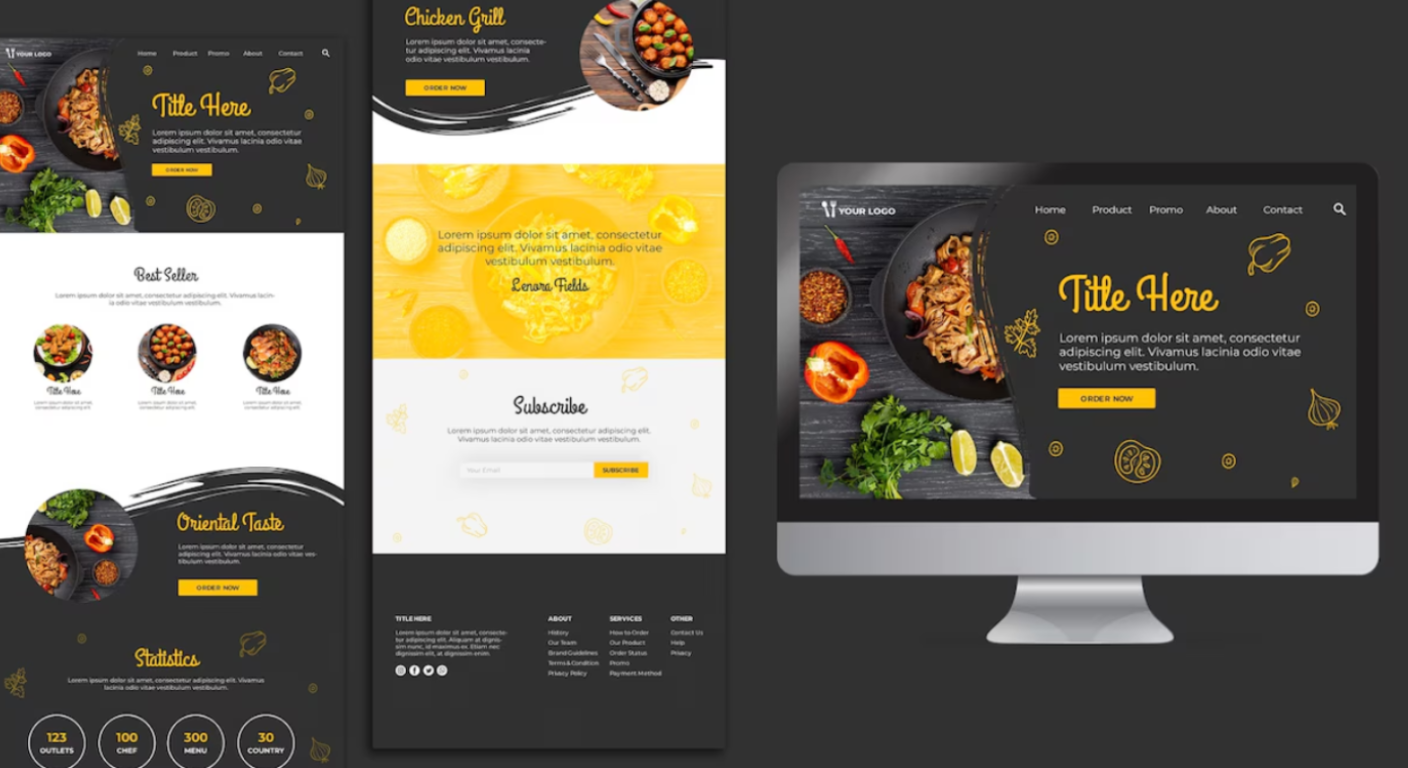Web design trends evolve each year as user behaviors shift, technologies advance, and aesthetic preferences change. In 2025, website designers are embracing innovation more than ever. From immersive visuals to performance-enhancing techniques, this year’s design trends prioritize both style and function. This blog outlines the top 10 design trends you need to incorporate to stay ahead of the curve and deliver stunning, user-centric websites.
1. Dark Mode as a Standard
Dark mode is no longer just an optional feature—it’s becoming a standard part of web interfaces. Users appreciate its sleek appearance and reduced eye strain. Designers now focus on optimizing colors, contrast, and readability in dark mode. Brands with premium or tech-savvy personas often use it to stand out. The key is maintaining usability while offering the modern aesthetic users expect.
2. 3D and Immersive Visuals
Thanks to improved browser support and faster devices, 3D visuals are gaining traction. Websites now incorporate 3D product models, interactive environments, and subtle animations. These visuals boost engagement and make experiences more dynamic. Tools like Three.js and WebGL help bring these designs to life. Use them judiciously to avoid performance issues and focus on enhancing storytelling or product presentation.
3. Micro-Interactions for Better UX
Micro-interactions—small animations that respond to user actions—are powerful for guiding and delighting users. They include hover effects, button responses, loading indicators, and form feedback. These tiny movements provide context and improve navigation flow. When done right, they make the website feel more intuitive and responsive, contributing to a more refined and human-centered user experience.
4. AI-Driven Personalization
AI is reshaping web design by offering real-time personalization. From personalized product recommendations to dynamic content placement based on behavior, AI creates unique experiences for each visitor. Designers now plan layouts and UI elements that adapt based on user input, location, or preferences. Integrating AI elements boosts engagement and helps retain users longer.
5. Glassmorphism & Frosted Effects
Glassmorphism, which mimics frosted glass surfaces with blurred backgrounds, has become popular in modern UI design. It provides depth and layering while maintaining a clean, minimal look. This trend pairs well with soft shadows, vibrant gradients, and subtle transparency. When used strategically, it adds elegance without overwhelming the design.
6. Voice-Optimized Interfaces
Voice search and voice interface design are critical as smart assistants and accessibility features become standard. Websites in 2025 are incorporating voice-trigger elements and ensuring compatibility with voice navigation. Designers must consider visual prompts for voice interactions, simple navigation cues, and accessibility standards to stay inclusive and modern.
7. Minimalist Navigation Structures
Users want quick access to what matters. Minimalist navigation focuses on simplicity and efficiency. Hidden menus, sticky headers, and smart content grouping are key techniques. These structures reduce clutter while ensuring users can explore seamlessly. When done well, minimalist navigation helps users stay focused and engaged.
8. Scroll-Based Animation and Storytelling
Parallax scrolling and scroll-based animations are widely used to guide users through stories. These features turn websites into dynamic experiences, often used for portfolios, product showcases, or editorial content. Designers use timing, motion, and layering to create immersive experiences without causing lag. It’s storytelling that moves with the user.
9. Bold Typography as Visual Identity
Typography is becoming a centerpiece of design. Bold, oversized fonts are used to command attention and express brand personality. Paired with minimal layouts, they help break up content and direct the user’s eye. Custom fonts and kinetic typography are also trending, allowing brands to showcase their uniqueness with style.
10. Sustainability-Inspired Design
Eco-conscious web design is growing as users and brands prioritize sustainability. Lightweight design practices, green hosting, and minimal scripts reduce the carbon footprint of websites. Design-wise, earthy colors, natural textures, and sustainable imagery communicate eco-friendliness. Conscious design isn’t just trendy—it’s part of ethical digital practice.
Conclusion
In 2025, successful website designers must balance innovation with usability. These trends reflect a shift toward engaging, accessible, and performance-optimized design. Whether you’re revamping a client site or creating a new one, staying on top of trends ensures your work is relevant and competitive. Start experimenting and future-proof your web design approach today.





